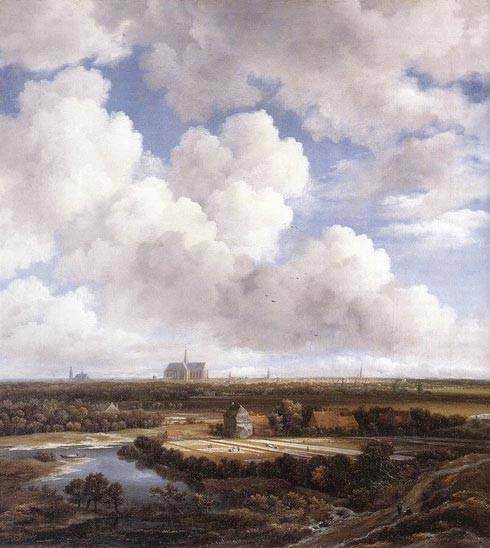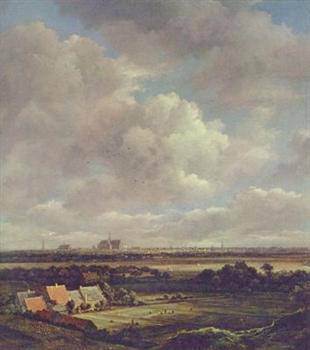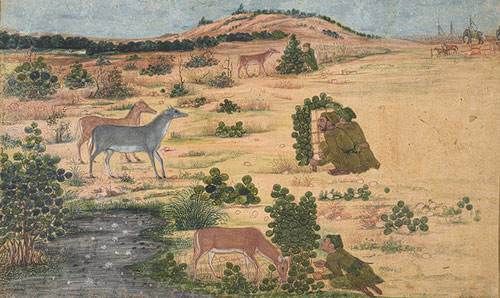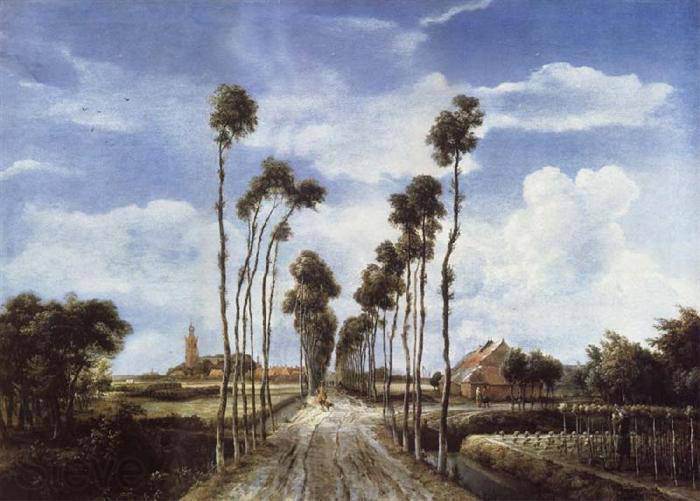Jacob Van Ruysdael · View of Haarlem with Bleaching Grounds

Jacob Van Ruysdael (or Jacob van Ruisdael, Dutch, ca.1628-1682), ca.1665-75, oil on canvas, 62,2 x 55,2 cm (24.5 x 21.7 in). Kunsthaus, Zurich
Jacob Isaackszoon van Ruisdael, a key figure in a time of great landscape painters, was in contact with landscape painting since he was a child, as both his father Isaak and his uncle Salomon were quite respected landscape painters. Nevertheless, his works were little appreciated in his time, but today he is considered the greatest Dutch landscape painter of his time, along with Meindert Hobbema, whom he was good friends with.
The business of bleaching linen was one of the main industries in Haarlem at Van Ruysdael’s time. This industry required a large amount of water, so the flat and wet Haarlem was an ideal place. These bleaching grounds are shown in the foreground of this painting, while the city of Haarlem, dominated by the enormous figure of the Grote Kerk, appears at the background.
This painting could be used to define 17th century Dutch landscape painting. The very low horizon line (a similar strategy was used by Vermeer in his famous “View of Delft”) allows the artist to focus on the representation of the sky. The presence of clouds alternating with areas of clear sky explains the changing illumination of the terrain. One of the areas of maximum illumination coincides with the bleaching grounds, filled with linens of a nearly pure white color. Some art historians have proposed mystical or religious interpretations to this fact, but none of them is strongly supported by evidences.
The Rijksmuseum in Amsterdam keeps another painting with the same subject, although smaller and not showing the pond on the left. A quite different version is exhibited at the Thyssen Museum in Madrid.
G. Fernández – theartwolf.com

Another painting with the same title at the Rijksmuseum
Follow us on:


